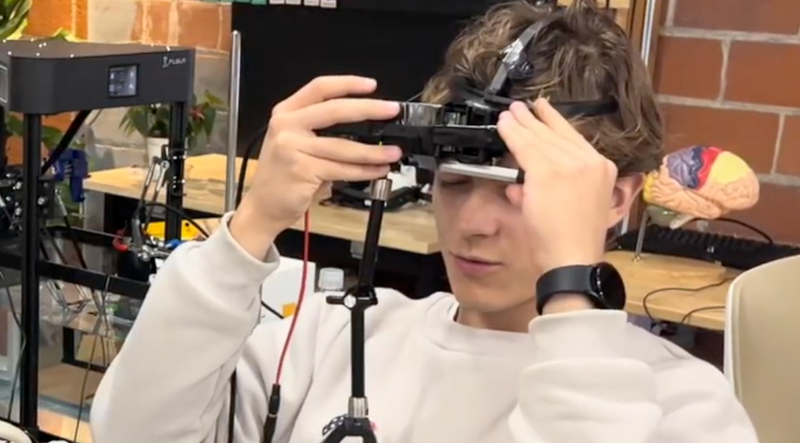
A team of researchers, led by Lev Chizhov, has made a groundbreaking discovery in sensory technology by using ultrasound waves to induce various smells in human subjects. This innovative method targets the olfactory bulb, a crucial part of the brain responsible for the sense of smell, located just behind the nose. The study has raised intriguing possibilities for future applications in virtual reality and sensory experiences.
To achieve this, the researchers developed a custom headset equipped with a transducer that emits ultrasound waves. The device is placed on the forehead, allowing precise targeting of the olfactory bulb. This approach circumvents the challenges posed by the complex anatomy of the nose, which can hinder direct ultrasound application due to its air-filled structure. By utilizing magnetic resonance imaging (MRI), the team was able to accurately guide the ultrasound to specific areas within the olfactory bulb, enhancing the effectiveness of their technique.
Early results from this experimental method are promising. Although the sample size is currently limited to two participants, the researchers successfully induced the perception of various smells, including fresh air, garbage, ozone, and burning wood. These findings open the door to numerous potential applications, from enhancing virtual reality experiences to creating immersive training environments.
As the research progresses, possibilities for practical uses of this technology continue to emerge. For instance, could it be integrated into virtual reality systems to create a more immersive environment? Imagine a gaming scenario where players can not only see and hear but also smell their surroundings, adding a new layer of realism to the experience.
While the idea of a “smell-o-vision” or a garbage truck virtual reality game may seem far-fetched, the implications of this research are significant. As the technology evolves, it may lead to new ways of experiencing the world around us, particularly in fields such as education, therapy, and entertainment.
In conclusion, the work of Lev Chizhov and his team represents a significant advancement in our understanding of sensory perception. By utilizing ultrasound to stimulate the olfactory bulb, they have not only demonstrated a novel approach to inducing smells but also sparked discussions about the future of sensory technology. As further research unfolds, the potential applications of this technique may redefine our interaction with virtual and augmented realities.






